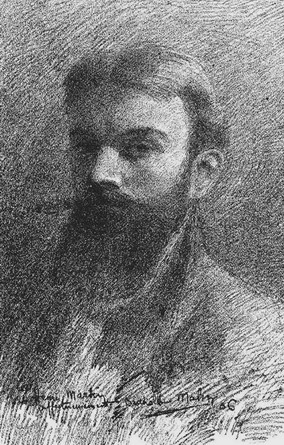<Back to Index>
- Writer Henri - Martin Barzun, 1881
PAGE SPONSOR

Henri-Martin Barzun (1881 in Grenoble, France - 1974 in New Rochelle, New York), was a French poet and writer.
He participated in the community of l'Abbaye de Créteil from 1906 to 1908 with Georges Duhamel, René Arcos, Alexandre Mercereau, etc.. The Abbey was a villa on the Marne, open to artists. Jules Romains and FT Marinetti also attended.
He was a founder and a director, between 1911 and 1914, of the magazine Poetry and drama. He was one of the founders and the main theorist of simultaneity. In 1912, he founded with Apollinaire, Louis de Royaumont and Sébastien Voirol the "Art Club Passy", which would become one of the origins of "Laboratory Art and Action", an important experimental theater group (headed from 1919 to 1933 by both Edward and Louise Lara), which inspired several of his polyphonic works.
Sent on a mission to the United States in 1917, he settled there with his family in 1919 (his son Jacques Barzun would have a distinguished academic career). He taught French in 1920 and founded "The French - American Art Guild for the Advancement of XX Century Arts", then in 1929, a school of experimental theater ("New Drama School"), which became in 1939 "The Orphic Art Center "in New York, under which he continued his experiments in polyphony. In contact with Marcel Duchamp, Albert Gleizes and Edgard Varèse, he ran during the World War II the journal The French Forum [Quarterly] and organized into the 1960s many cycles of readings and lectures on French literature.
Poetry
- 1906: the first volume of The Earth tragedy, generic title which includes several works, including The Poems of Man (1907), Songs of the Idea (1906), The Mountain (1908).
- 1908: Hymn forces, dramatic poem
His major work, The Universal Orphéide or The Poem, was never published in full: there is a first extracted poem and drama , No. 6, September - October 1913. Two other extracts in two shipments of Art Orphic [The Renaissance aesthetics] (1929 and 1930?). There are two versions of this text: the first seven songs and an apotheosis, completed in 1927, the second of twelve songs, unfinished, dated 1933. The 1927 version comes from 1914 and it appears that it is only missing Canto VII and part of Canto VI. The evolution of transcription of polyphonic work made Barzun not only a major representative of sound research, conducted by the historical avant garde, but also a precursor of visual poetry.